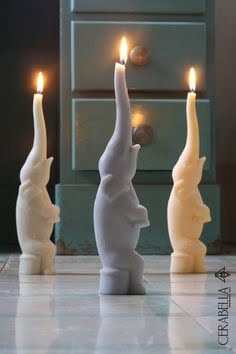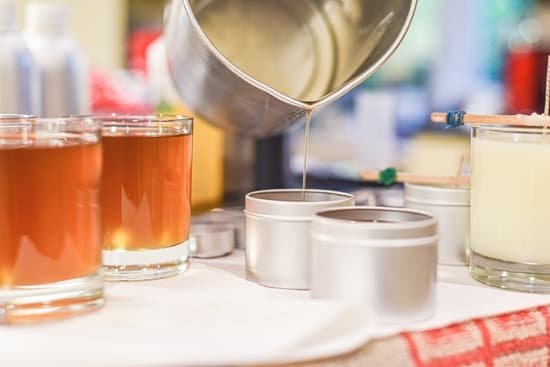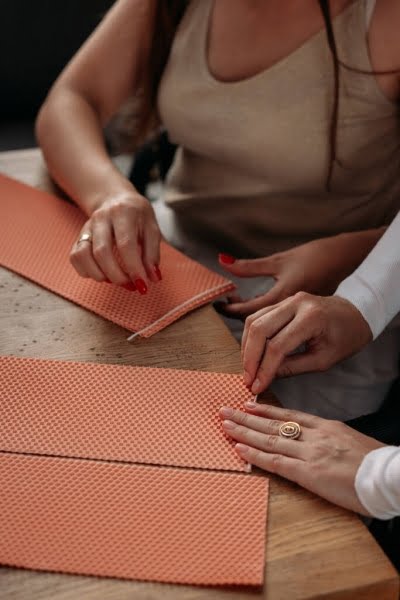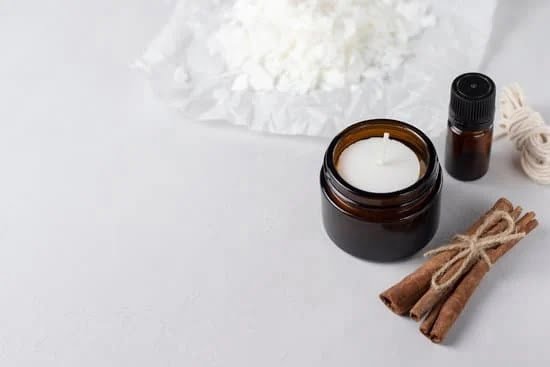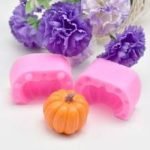Are you looking for a creative and rewarding hobby? There’s no need to look any further, as we have the perfect solution – basic candle making recipe.
Making your own candles is a wonderful way to unleash your creative side, while also producing beautiful and useful items for yourself or loved ones. Whether you want to create decorative pieces for your home, personalized gifts, or even start a small business, candle making is a versatile and enjoyable craft that anyone can learn.
In this article, we will guide you through the process of creating your own candles with our basic candle making recipe. We’ll cover everything from the essential tools and materials needed to get started, to troubleshooting common issues that may arise during the process. By the end of this article, you’ll not only have a newfound appreciation for handmade candles but also the knowledge and confidence to embark on your own candle making journey.
With an emphasis on safety precautions and tips for choosing the right wax for your candles, our comprehensive guide will provide you with all the information you need to start creating your own stunning candles. But before we dive into the step-by-step guide and explore different techniques for adding scent and color to your creations, let’s first understand why making your own candles can be a fulfilling and worthwhile endeavor.
Understanding the Basics
When it comes to understanding the basics of candle making, it’s important to recognize the different types of candle making methods available. Each method has its own unique process and outcomes, allowing you to explore and experiment with various techniques. Here are the primary types of candle making to consider:
- Container Candles: This involves pouring melted wax into a container, such as a glass jar or tin, with a wick inserted in the center. These candles are easy to make and can be customized with different scents and colors.
- Pillar Candles: Pillar candles are created by pouring wax into a mold and allowing it to harden. Once set, the candle is removed from the mold and can stand alone without a container. This method allows for artistic designs and shapes.
- Taper Candles: Taper candles are made by repeatedly dipping a wick into melted wax until the desired thickness is achieved. This traditional method requires patience but can result in elegant tapered candles.
Another notable type of candle making is using pre-made paraffin or beeswax sheets to craft rolled candles. This method is perfect for beginners who want a simple yet creative approach to candle making.
Ultimately, understanding the different types of candle making will help you decide which method best suits your skills, preferences, and desired outcomes when creating your own handmade candles.
In addition to these basic candle making methods, experimenting with different waxes can also yield unique results. Beeswax, soy wax, paraffin wax, and gel wax each have distinct qualities that affect the appearance and burning characteristics of the finished candles.
Whether you’re drawn to container candles for their simplicity or intrigued by the artistry of pillar or taper candles, exploring these various types of candle making will provide an opportunity for creativity and self-expression in your crafting endeavors.
Essential Tools and Materials Needed for Candle Making
Making your own candles can be a fun and rewarding hobby. To get started with this craft, it’s essential to gather the right tools and materials for candle making. Whether you’re a beginner or experienced crafter, having the correct supplies is crucial to creating high-quality candles.
The basic candle making recipe requires several essential tools and materials. You will need a double boiler or melting pot to melt the wax, a thermometer to monitor the temperature, and a heat source such as a stove or hot plate.
Additionally, you will need molds or containers to shape the candles, wicks that are appropriate for the type of wax being used, and a stirring utensil like a wooden spoon or skewer. It’s also important to have a workspace that is well-ventilated and free from any flammable materials.
In terms of materials, choosing the right wax is crucial for successful candle making. There are various types of wax available such as paraffin wax, soy wax, beeswax, and gel wax. Each type of wax has its own unique characteristics and qualities, so it’s important to select one that suits your specific needs and preferences.
Other materials needed include fragrance oils or essential oils for scent, dye chips or liquid dye for color, and any additional decorative elements like dried flowers or herbs if desired. By ensuring you have all these essential tools and materials on hand, you can set yourself up for an enjoyable candle making experience.
Step-by-Step Guide to Making Your First Candle
Making your own candles can be a fun and rewarding hobby. With a few basic supplies and some creativity, you can create beautiful candles to enjoy in your home or give as gifts to family and friends. In this step-by-step guide, we will walk you through the process of making your first candle using a basic candle making recipe.
Gather Your Supplies
Before you begin, make sure you have all the necessary supplies on hand. You will need wax, wicks, a double boiler or melting pot, a thermometer, fragrance oil (optional), color dye (optional), and a container to pour the wax into. You can find these items at craft stores or online retailers that specialize in candle making supplies.
Melt the Wax
The first step in making your candle is to melt the wax. Use a double boiler or melting pot to heat the wax gently over medium heat until it reaches the desired temperature. It’s important to monitor the temperature closely with a thermometer to ensure the wax doesn’t get too hot.
Prepare the Container and Wick
While the wax is melting, prepare your container by securing the wick in place. You can use special adhesive tabs or plain old glue for this purpose. Make sure the wick is centered in the container and straight up to ensure an even burn.
Following these steps along with our basic candle making recipe will give you a great start in making your own candles at home. Enjoy getting creative with different scents and colors while mastering this new skill.
Adding Scent and Color to Your Candles
Once you’ve mastered the basic candle making recipe, it’s time to add some creativity to your homemade candles by incorporating scents and colors. Adding fragrance to your candles can enhance the ambiance of any room, while a pop of color can make them more eye-catching as decorative pieces. Here’s how you can easily add scent and color to your candles:
Adding Scent to Your Candles
There are various ways you can add fragrance to your candles, such as using essential oils or candle fragrance oils. To incorporate scent into your candles, simply follow these steps:
- Choose the type of fragrance you want for your candle.
- If using essential oils, mix a few drops into the melted wax before pouring it into the container.
- If using candle fragrance oils, follow the recommended usage guidelines provided by the manufacturer. Typically, it involves adding a specific amount of fragrance oil per pound of wax.
Adding Color to Your Candles
Coloring your candles can be a fun and creative process. Here are some methods for adding color to your candles:
- Using crayons or colored wax chips – simply melt them with the wax to achieve the desired color.
- Using liquid dyes specifically made for candle making – carefully add a few drops at a time until you reach the desired shade.
By experimenting with different scents and colors, you can create unique and personalized candles that suit your taste and style. However, remember that less is often more when it comes to both scent and color – so start with small amounts and gradually increase as needed.
Troubleshooting Common Issues in Candle Making
Even with the most careful preparation, candle making can sometimes encounter problems. Knowing how to troubleshoot these common issues can save you time and frustration.
One of the most common issues in candle making is tunneling. Tunneling happens when the outer edges of a candle burn down faster than the center, leaving a ring of unburned wax around the wick. To prevent tunneling, ensure that your candles have a wide enough diameter and use a properly sized wick to achieve an even melt pool during burning.
Another frequent problem is uneven fragrance distribution. This occurs when the scent does not evenly disperse throughout the wax, resulting in some areas being heavily scented while others have little to no fragrance at all. To avoid this issue, make sure to thoroughly mix the fragrance oil into the melted wax and allow it to cool slightly before pouring it into the container.
Frosting is another common issue that can affect the appearance of your candles. Frosting appears as a white, powdery film on the surface of the wax and is caused by temperature changes during cooling. To minimize frosting, try pouring your wax at a slightly higher temperature and avoid exposing your candles to extreme temperature changes during cooling.
| Common Issues | Troubleshooting Tips |
|---|---|
| Tunneling | Use wider diameter candles and correctly sized wicks |
| Uneven Fragrance Distribution | Mix fragrance oil thoroughly into wax; allow it to cool before pouring |
| Frosting | Pour wax at a slightly higher temperature; avoid extreme temperature changes during cooling |
Tips for Choosing the Right Wax for Your Candles
Choosing the right wax for your homemade candles is essential to ensure a quality end product. There are several types of wax commonly used in candle making, each with its own unique characteristics and benefits. The most popular waxes for candle making include paraffin, soy, beeswax, and coconut wax.
Paraffin wax is a popular choice for beginners due to its affordability and ease of use. It holds color and fragrance well, making it an excellent option for scented candles. However, some people prefer to avoid paraffin due to its petroleum-based origins.
Soy wax is a natural alternative that is derived from soybean oil. It burns cleaner and longer than paraffin wax, making it a popular choice for eco-conscious candle makers. Beeswax is another natural option that gives off a warm, natural scent and has air-purifying properties when burned. Coconut wax is a newer option on the market that offers excellent scent throw and a smooth, creamy appearance.
When choosing the right wax for your candles, consider factors such as burn time, scent throw, cost, and environmental impact. It’s also important to consider any personal preferences or values you have regarding natural or sustainable materials. Experimenting with different waxes can help you find the perfect fit for your basic candle making recipe.
| Types of Wax | Benefits |
|---|---|
| Paraffin | Affordable and holds color/fragrance well |
| Soy | Burns cleaner/longer and eco-friendly |
| Beeswax | Natural scent/purifying properties when burned |
| Coconut Wax | Excellent scent throw/smooth appearance |
Safety Precautions When Making Candles
Protective Gear
When making your own candles, it’s important to prioritize safety. Before you start, make sure to have the necessary protective gear on hand. This includes wearing gloves to protect your hands from hot wax and using safety goggles to shield your eyes from potential splashes or spills.
Working Area
Another crucial aspect of candle making safety is ensuring that you have a dedicated and well-ventilated workspace. Make sure to keep flammable materials away from the area where you are working and have a fire extinguisher nearby as a precaution.
Heat Source
When melting wax for your candles, always use a double boiler or wax melter specifically designed for candle making. Never melt wax directly over an open flame, as this can pose a serious fire hazard.
By following these safety precautions, you can enjoy the candle making process while minimizing any potential risks or accidents. Remember that prioritizing safety not only protects you but also ensures the quality of your homemade candles.
Conclusion
In conclusion, making your own candles can be a fun and rewarding experience. Not only do you get to customize the scent, color, and design of your candles, but you also have the satisfaction of creating something with your own hands. With the basic candle making recipe and the right tools and materials, anyone can try their hand at this craft and produce beautiful homemade candles.
Once you have mastered the basic candle making recipe, there are endless possibilities for creativity and experimentation. You can try using different types of wax, experimenting with various scents and colors, or even incorporating unique materials into your candles such as dried flowers or herbs. The options are truly limitless when it comes to making your own candles.
Furthermore, once you have a collection of handmade candles, you can enjoy them in your own home or give them as gifts to friends and family. Homemade candles make thoughtful and personalized presents for any occasion. So why not give it a try? Get started on your candle making journey today and see where it takes you.
Frequently Asked Questions
What Are the Basic Ingredients in Candle Making?
The basic ingredients in candle making include wax (such as soy, paraffin, or beeswax), a wick, fragrance or essential oils for scent, and dye if colored candles are desired. These ingredients can be easily sourced from craft stores or online.
How Do You Make Homemade Candles for Beginners?
For beginners, making homemade candles can be a fun and rewarding hobby. Start by gathering the necessary supplies including wax, wicks, fragrance oils, and a melting pot.
Melt the wax, add the fragrance oil and dye if desired, then pour the mixture into a container with a pre-tabbed wick. Allow it to cool and you’ve made your first homemade candle!
What Is the Formula for Candle Making?
The formula for candle making involves calculating the amount of wax needed based on the size of the container or mold being used. Typically, about 1 pound of wax will fill a 16-ounce jar or tin.
It’s important to also consider factors such as fragrance load (the amount of scent used) and wick size to ensure a properly burning candle.

Welcome to my candle making blog! In this blog, I will be sharing my tips and tricks for making candles. I will also be sharing some of my favorite recipes.

